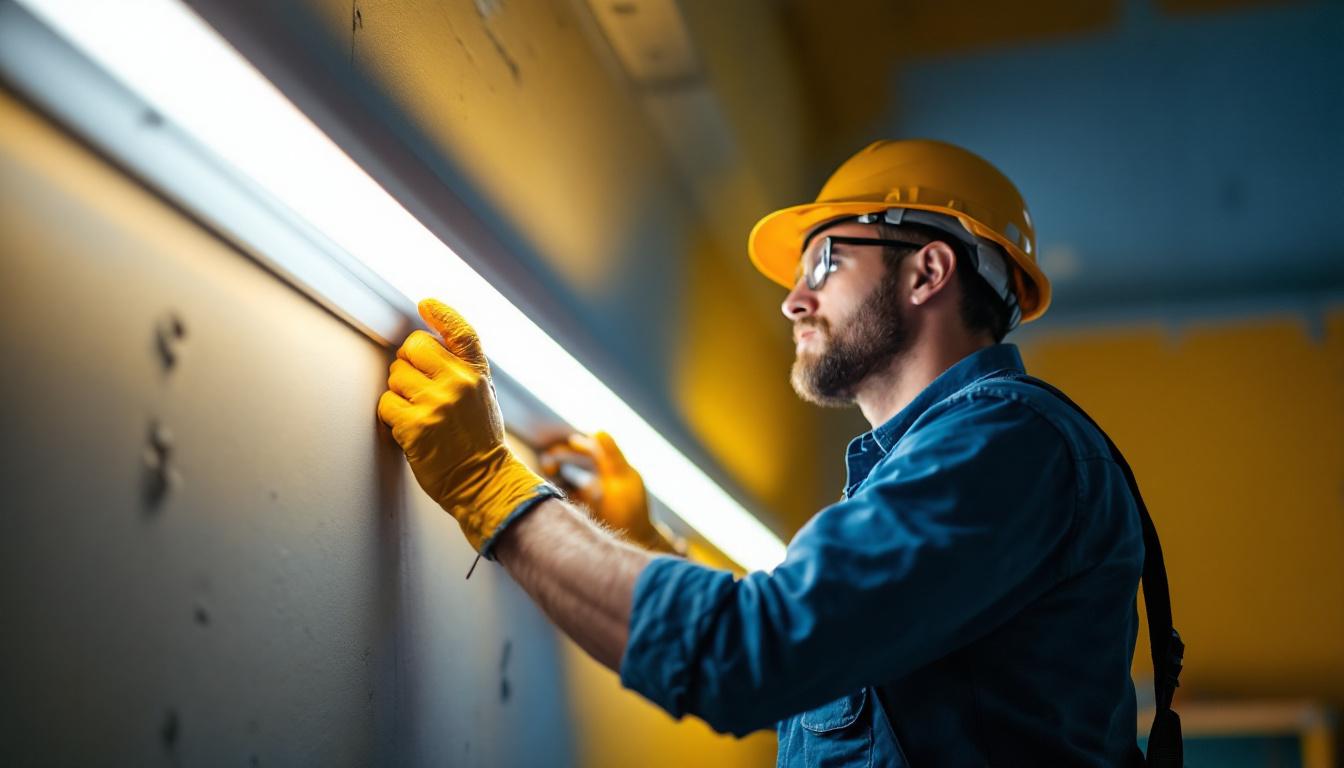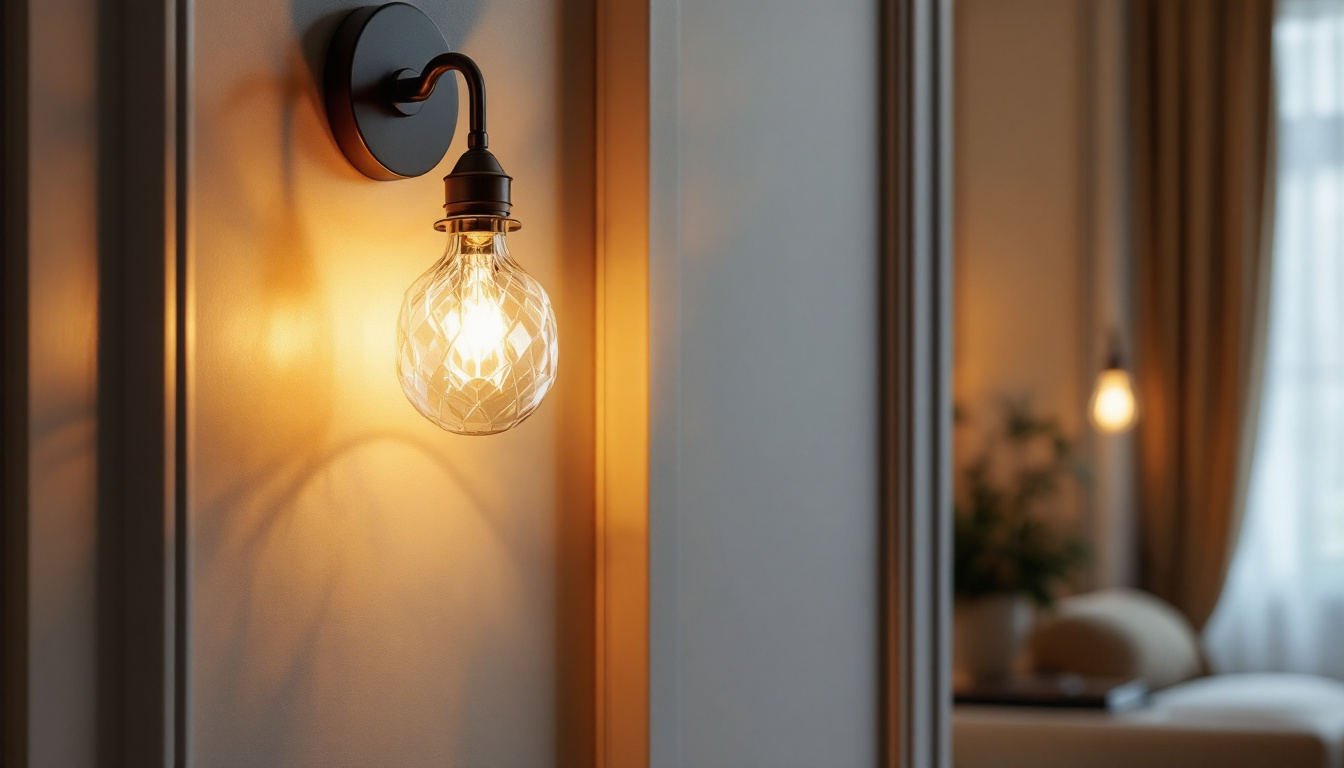
Converting Fluorescent Tube Lights To Led: Lighting Contractors’ Common Mistakes
As the demand for energy-efficient lighting solutions continues to rise, many lighting contractors are making the switch from traditional fluorescent tube lights to LED alternatives. While this transition can offer numerous benefits, including reduced energy consumption and longer lifespans, it is not without its challenges. Understanding the common mistakes made during this conversion can help contractors achieve a successful and efficient upgrade.
Before diving into the conversion process, it is essential for lighting contractors to grasp the fundamental differences between fluorescent and LED technologies. Fluorescent lights work by passing an electric current through a gas, which produces ultraviolet light that then excites a phosphor coating on the inside of the tube, creating visible light. In contrast, LEDs (Light Emitting Diodes) generate light through a semiconductor, which is a more efficient process. This fundamental difference not only affects how these lights operate but also influences their performance, energy consumption, and overall environmental impact.
Moreover, the compact design of LEDs allows for greater versatility in lighting applications. Unlike traditional fluorescent tubes that require specific fixtures and often take up more space, LEDs can be integrated into various designs, from recessed lighting to decorative fixtures. This adaptability opens up new possibilities for creative lighting solutions in both residential and commercial settings, making it easier for contractors to meet the diverse needs of their clients.
One of the most significant advantages of LED lights is their efficiency. LEDs consume significantly less power than fluorescent tubes, which translates to lower energy bills for clients. Additionally, LEDs have a much longer lifespan, often lasting up to 25,000 hours or more compared to the 7,000 to 15,000 hours typical of fluorescent lights. This longevity reduces the frequency of replacements, which can be a significant selling point for contractors. Furthermore, the reduced need for replacements not only saves money but also minimizes waste, making LEDs a more environmentally friendly option. As sustainability becomes an increasingly important consideration for many businesses and homeowners, promoting the eco-friendly aspects of LED technology can enhance a contractor’s appeal.
Another critical aspect to consider is the color temperature and quality of light produced by LEDs. Fluorescent lights typically emit a cooler, bluish light, while LEDs can be found in a variety of color temperatures, ranging from warm white to cool daylight. Understanding the desired ambiance for the space being illuminated is crucial for making the right choice in LED products. Contractors should be prepared to discuss these options with their clients to ensure satisfaction. Additionally, the quality of light emitted by LEDs is often superior, with better color rendering capabilities that enhance the appearance of spaces and objects. This is particularly important in settings such as retail environments, where accurate color representation can influence purchasing decisions, or in art galleries, where the true colors of artwork need to be showcased effectively.
Furthermore, advancements in LED technology have led to the development of tunable white and smart lighting solutions, which allow users to adjust the color temperature and brightness according to their preferences or the time of day. This flexibility not only enhances the user experience but also contributes to energy savings by allowing for customized lighting that meets specific needs without unnecessary waste. As contractors become more familiar with these innovative options, they can better serve their clients by providing tailored lighting solutions that enhance both functionality and aesthetics.
Despite the advantages of LED lighting, many contractors encounter pitfalls during the conversion process. Identifying these common mistakes can help avoid costly errors and ensure a smoother transition.
One of the most frequent oversights is failing to assess the compatibility of existing fixtures with LED tubes. Not all fluorescent fixtures are designed to accommodate LED replacements directly. Some require a ballast bypass, while others may need a complete fixture replacement. Before proceeding with the conversion, contractors should evaluate the existing setup and determine the necessary modifications. Additionally, it’s important to consider the physical dimensions of the LED tubes, as some may not fit snugly into older fixtures. This can lead to issues such as light leakage or improper installation, which can compromise the overall effectiveness of the lighting solution.
Ballasts play a crucial role in fluorescent lighting systems, regulating the current to the lamps. However, when converting to LED, it is essential to understand the type of ballast in use. There are two main categories: electronic and magnetic. Some LED tubes are compatible with electronic ballasts, while others require a bypass or are designed for use with magnetic ballasts. Misjudging the ballast type can lead to flickering lights or complete failure of the LED tubes. Furthermore, contractors should also be aware of the age and condition of the ballasts themselves. Older ballasts may not perform optimally with new LED technology, potentially leading to inefficiencies and increased energy costs. Conducting a thorough inspection of both the ballasts and the fixtures can help ensure a successful and efficient conversion process.
The market is flooded with LED products, making it tempting to choose the most readily available or cost-effective options. However, selecting the right LED products is critical for a successful conversion.
While budget constraints are a reality in many projects, opting for cheaper LED products can lead to poor performance and dissatisfaction. Low-quality LEDs may have a shorter lifespan, inconsistent color temperature, and inadequate light output. Contractors should prioritize quality and reliability when selecting products, as this will ultimately reflect on their reputation and the satisfaction of their clients. Investing in reputable brands often comes with warranties and customer support, which can be invaluable in the long run. Furthermore, quality LEDs tend to have better heat dissipation, reducing the risk of overheating and potential damage to fixtures, thereby ensuring a safer environment for both workers and clients.
Another common mistake is misunderstanding the relationship between lumens and wattage. Many contractors may assume that higher wattage equates to brighter light, but this is not the case with LEDs. Instead, it is essential to focus on lumens, which measure the total amount of visible light emitted by a source. When converting from fluorescent to LED, contractors should aim to match or exceed the lumens produced by the existing fluorescent tubes to ensure adequate lighting levels. Additionally, it’s important to consider the color temperature of the LEDs, which can significantly affect the ambiance of a space. For instance, warmer color temperatures (around 2700K to 3000K) create a cozy atmosphere, ideal for residential settings, while cooler temperatures (5000K and above) are often preferred in commercial environments for their energizing effect. By understanding these nuances, contractors can tailor their lighting solutions to meet specific needs and enhance the overall experience of the space.
The installation process can present its own set of challenges during the conversion from fluorescent to LED lighting. Proper installation is crucial to ensure the longevity and efficiency of the new lighting system.
When retrofitting existing fixtures for LED use, improper modifications can lead to issues such as overheating or electrical failures. Contractors must follow manufacturer guidelines carefully and ensure that all wiring is correctly configured. This attention to detail will help prevent future problems and ensure the safety of the installation.
Local building codes and regulations can vary significantly, and ignoring these can lead to compliance issues. Contractors should familiarize themselves with local requirements regarding electrical installations and energy efficiency standards. This diligence not only protects the contractor but also ensures that clients receive a safe and compliant lighting system.
Once the conversion is complete, there are still several factors to consider to ensure the continued success of the LED lighting system.
Educating clients about their new LED lighting system is essential for maximizing its benefits. Many clients may not be familiar with the differences between fluorescent and LED technologies, including maintenance requirements and energy savings. Providing clear information about how to operate and care for their new lighting will enhance their experience and satisfaction.
After installation, monitoring the performance of the LED system is crucial. Contractors should encourage clients to report any issues, such as flickering lights or color inconsistencies. Addressing these concerns promptly can help maintain client trust and satisfaction. Regular follow-ups can also lead to additional business opportunities, such as future upgrades or maintenance contracts.
Converting fluorescent tube lights to LED is a significant step toward energy efficiency and sustainability. However, lighting contractors must navigate various challenges to ensure a successful transition. By understanding the differences between technologies, avoiding common mistakes, and focusing on quality products and installations, contractors can provide exceptional service to their clients. Ultimately, a well-executed conversion can enhance the reputation of the contractor and lead to long-term client relationships.
In summary, the shift from fluorescent to LED lighting presents both opportunities and challenges. By being aware of the common pitfalls and taking proactive steps to address them, lighting contractors can ensure a smooth and successful transition that benefits both their business and their clients.
Ready to elevate your lighting projects and avoid common pitfalls in the transition from fluorescent to LED? LumenWholesale is here to support you every step of the way. Our extensive selection of spec-grade lighting products combines quality with unbeatable wholesale pricing, ensuring you get the most value for your investment. Say goodbye to middleman markups and hello to hassle-free bulk buying with free shipping. Make the smart choice for your business and your clients by choosing Wholesale Lighting at the Best Value. Partner with LumenWholesale today and experience the difference in quality, affordability, and convenience.

Discover how long hanging lights are transforming the lighting industry and becoming the secret weapon for contractors.

Discover why flat panel lights are revolutionizing the lighting industry and becoming essential tools for contractors.

Discover the transformative power of lighting strips with expert insights from top lighting contractors.

Discover the ultimate guide to lighting sconces with insights from top lighting contractors.